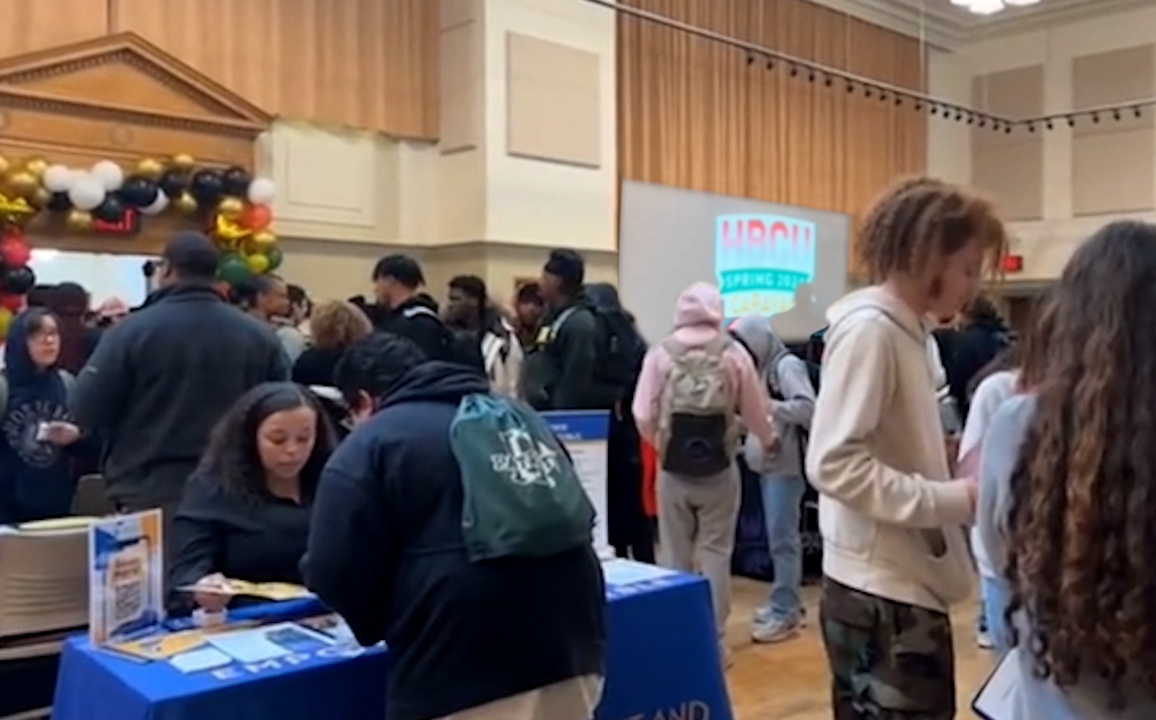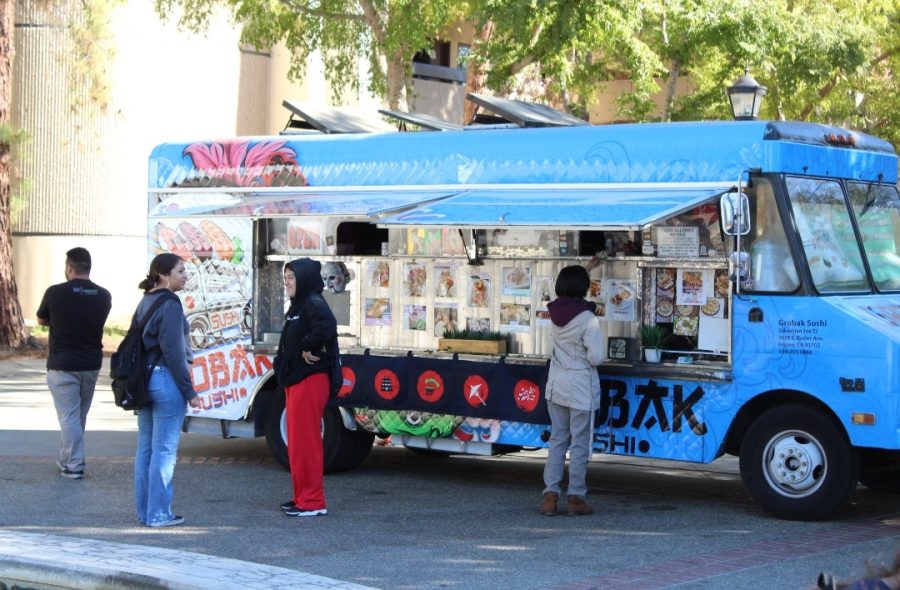After the turmoil of the sixties, Fresno City College began its first stages into normalcy. The Vietnam War ended in the mid 1970s and while many families reunited with loved ones across America, college campuses awaited the arrival of a new generation of students. This new wave of students was about to hit Fresno City College.
“One thing I remember from the 70’s was the growth on campus every semester. We seemed to have more students register than we could accommodate,” Franz Weinschenk said. “It was so bad that I had to create a lottery system to allow students in my classes. At one point, I recall a student in despair clenching at my shirt, begging me to let her in my class…it was intense.”
This was in large part, due to the shutting down of the Old Administration Building. During this time, the Board of Trustees held a meeting with faculty members and citizens from the community to decide what would be the appropriate measure to take either to keep the building in use after undergoing serious restoration or to shut it down completely.
Franz Weinschenk said he walked in at the very moment the discussion was taking place and noticed that a panel of civil engineers were answering a series of questions posed by the board of Trustees of SCCCD about the strength and durability of the building.
Would the building’s 14-16″ walls hold the building together in case of an emergency? Would restoration be mandated if the building were to be kept open? Would a potential earthquake cause the corners of the building to loosen, making the building implode on itself?
Weinschenk remembers a Trustee voicing his concern, particularly, about the building’s resistance in case of an earthquake. The main concern surrounding the building was that it did not contain steel rods that would sustain its weight. Moreover, a new law termed the “FIELD ACT” had passed, forcing the Board of Trustees to take serious consideration into shutting it down.
During the session between the Board of Trustees and engineers, a board member posed a question that lead to the closing of the OAB.
“If you had a son or daughter of college age attending this university, would you be concerned for their safety if they were to take a class in that building?” the Trustee asked.
“Absolutely,” the engineer said. With this statement, the OAB was shut down for good.110,000 square feet of classroom space, 50 classrooms, two lecture labs, a library, a band room, all classrooms that echoed the teachings of science, art, math, history, English, and business, plus a main office and auditorium were shut down. The two-story building with high ceilings, great acoustics and cool temperatures in the summer would be abandoned for the following 35 years.
“I am still disappointed to know that the building has been barbed-wired and closed for this long. I went to school in that building. I taught there and I liked it. I do not think it is the mission of a school to save buildings when students need to be taught,” he said.
The main question after the building was closed was, where would the students go?
Weinschenk said there was such a dire need for space that classes at FCC began as early as 6:00 a.m. and would go through 10:00 p.m., on to the weekends, including Sundays. This was all because the OAB wanted to be saved.
Within weeks, the construction of a brand new Fresno City College would emerge. The effort combined the ideas of the faculty and administration. The deans of each department played an active role in the planning, architecture, and organization of the buildings.
Deans supervised the work for their division building; their plans were based on the number of students in their respective divisions.
Only five divisions existed during this time including the Business, Technical/Industrial, Science, Business and Humanities (being the two largest on the campus).
Later on, a grant given to the school would add the art gallery, foreign language and piano lab to the campus.
The biggest challenge on campus was to get a theatre for the students. The general idea of the architects and supervisors at the time was to build a multi-purpose room that would accommodate dances, fashion shows, exhibits and Macbeth all at different points within the school year.
” I really thought this idea would not work. You would have a little bit of everything and a whole lot of nothing in the end,” said Weinschenk.
After a series of arguments among administrators, faculty and architects, the Art faculty members including Tom Wright, Fred Johnson and Tim Quinn decided that a theatre be built exclusively for the use of the Theatre and Arts department.
“What I wanted was a theatre that had good acoustics, comfortable seats, a modern sound and light board, and a place for stage craft,” said Weinschenk. “At one point, I was so determined to have the best theatre that the theatre seat making business let me borrow several different types of chairs in which I arranged in my office. When students came in to my office I asked for their opinion about the level of comfort of each chair,” said Weinschenk.
“I just really wanted a really nice theatre,” said Weinschenk. “If you build a theatre, you build it for eternity; as long as there is the existence of mankind, there will be a theatre. For some odd reason, they are never torn down. People always rebuild and restore them. If we were to have one, I wanted a good and solid one.”
Eventually, the FCC theatre emerged. Many decisions were made in the process, which made the theatre come together smoothly.
The last item that was needed was a set of curtains. However, the music department shifted their focus to a particular instrument: a Baldwin organ.
Gil Rodriguez, a young faculty member from the music department, was interested in teaching organ classes on campus. Unfortunately, the instructor passed away suddenly after being diagnosed with cancer. The search for an organ instructor continued, however, and Weinschenk organized a jog-a-thon around Radcliff Stadium in order to raise money for the purchase of the organ. Five years and $10,000 later, there was still not enough for its purchase.
“It took so long for us to reach our goal, that at one point, the faculty members poked fun at me saying ‘all we do is run around Ratcliffe Stadium so that Franz could have his organ,” Weinschenk said.
Eventually, the Board of Trustees gave Weinschenk the remaining balance of $20,000 to purchase the Baldwin concert organ.
The Baldwin Company conducted an inauguration concert at the new FCC theatre with a famous organ musician. Shortly after, it was kept in the storage room of the music department because no other faculty member shared the same enthusiasm as Gil Rodriguez.
Weinschenk states that he is saddened that the organ has not been touched in over 30 years and rumor has it that the organ will soon be sold.
“If they sell the organ, I want the faculty to not tell me. I don’t want to know that I jogged around Radcliff stadium for five years to have it sit in a dusty room and then be sold off,” he said.
Weinschenk said he is proud of the theatre and its use throughout the past 30 years.
“I am proud of the fact that the theatre arts department has taken good care of the place. It is almost as nice today as it was 30 years ago. It is certainly one of the best show places in the valley today.”



